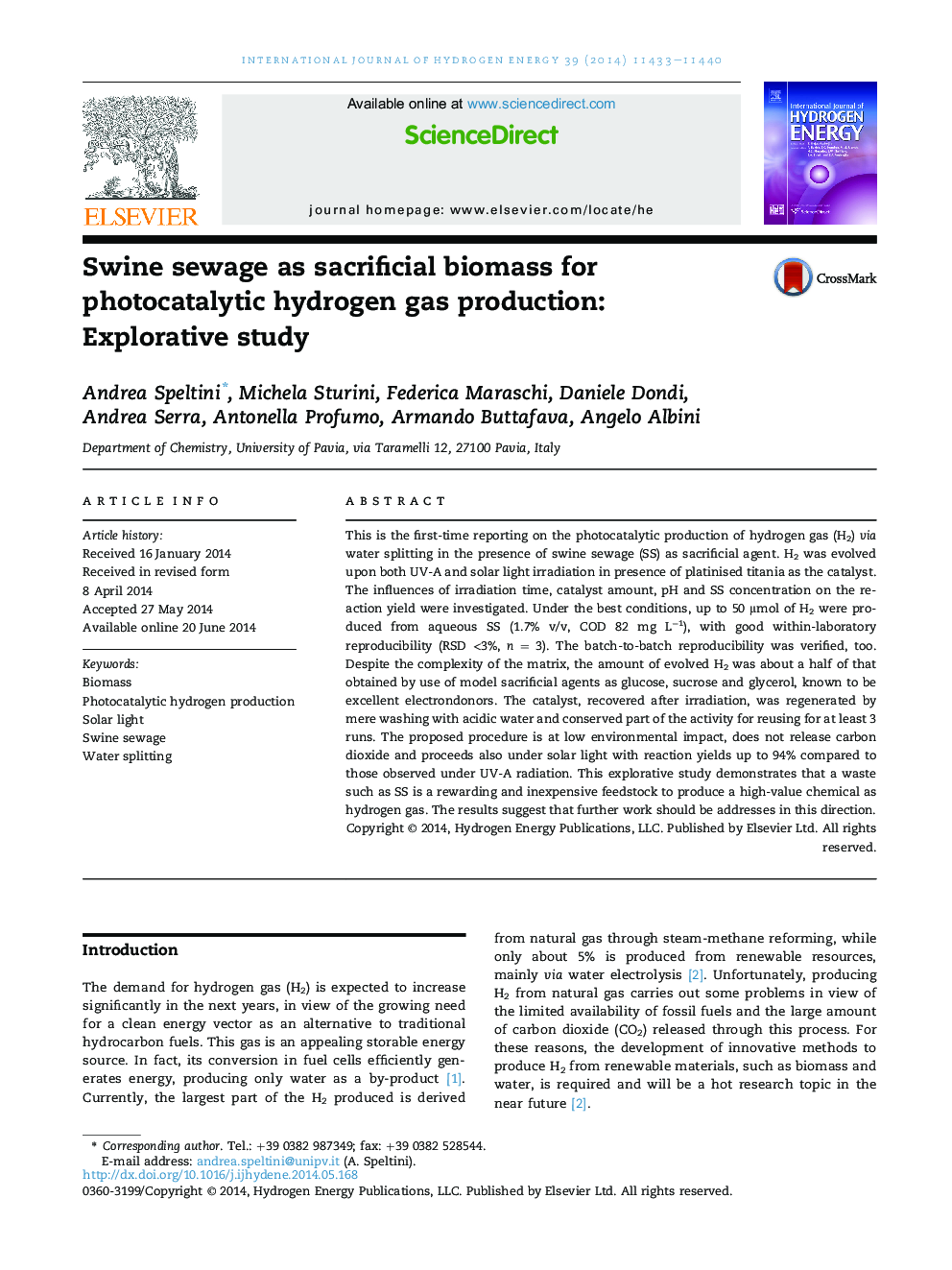| Article ID | Journal | Published Year | Pages | File Type |
|---|---|---|---|---|
| 1273161 | International Journal of Hydrogen Energy | 2014 | 8 Pages |
•Swine sewage biomass used as electron donor for photocatalytic hydrogen production.•Swine sewage is a low-cost and rewarding sacrificial agent.•No carbon dioxide is released by the process.•Hydrogen gas evolution proceeds also under solar light.
This is the first-time reporting on the photocatalytic production of hydrogen gas (H2) via water splitting in the presence of swine sewage (SS) as sacrificial agent. H2 was evolved upon both UV-A and solar light irradiation in presence of platinised titania as the catalyst. The influences of irradiation time, catalyst amount, pH and SS concentration on the reaction yield were investigated. Under the best conditions, up to 50 μmol of H2 were produced from aqueous SS (1.7% v/v, COD 82 mg L−1), with good within-laboratory reproducibility (RSD <3%, n = 3). The batch-to-batch reproducibility was verified, too. Despite the complexity of the matrix, the amount of evolved H2 was about a half of that obtained by use of model sacrificial agents as glucose, sucrose and glycerol, known to be excellent electrondonors. The catalyst, recovered after irradiation, was regenerated by mere washing with acidic water and conserved part of the activity for reusing for at least 3 runs. The proposed procedure is at low environmental impact, does not release carbon dioxide and proceeds also under solar light with reaction yields up to 94% compared to those observed under UV-A radiation. This explorative study demonstrates that a waste such as SS is a rewarding and inexpensive feedstock to produce a high-value chemical as hydrogen gas. The results suggest that further work should be addresses in this direction.
Graphical abstractFigure optionsDownload full-size imageDownload as PowerPoint slide
